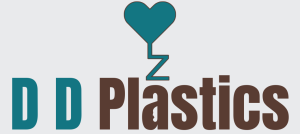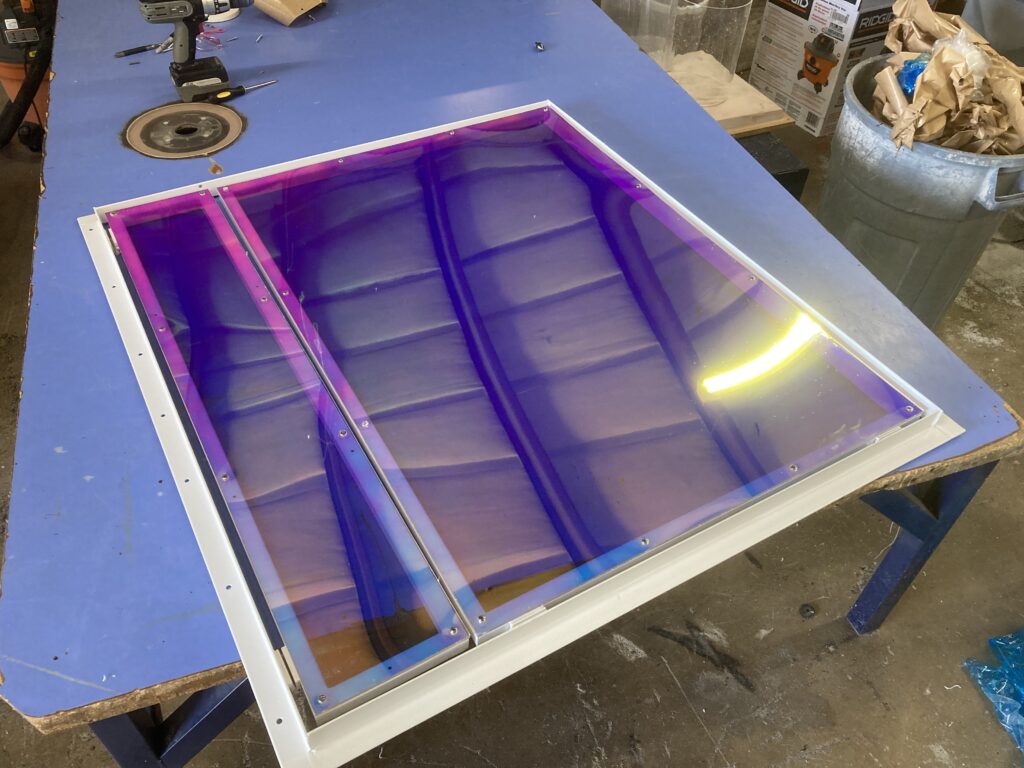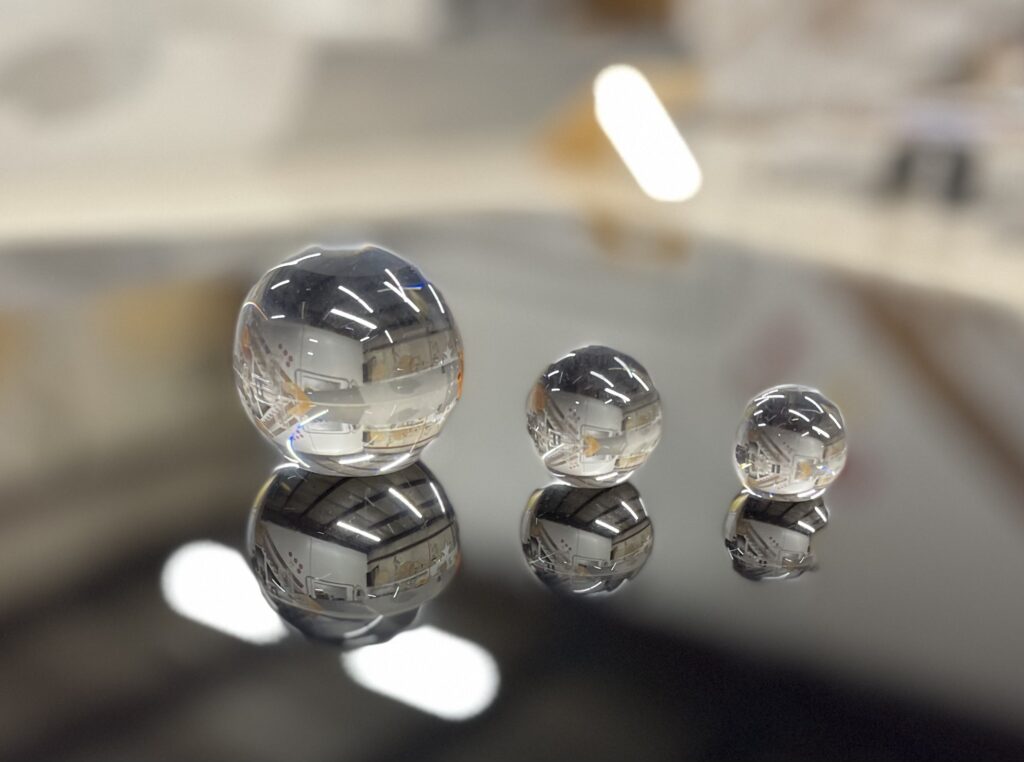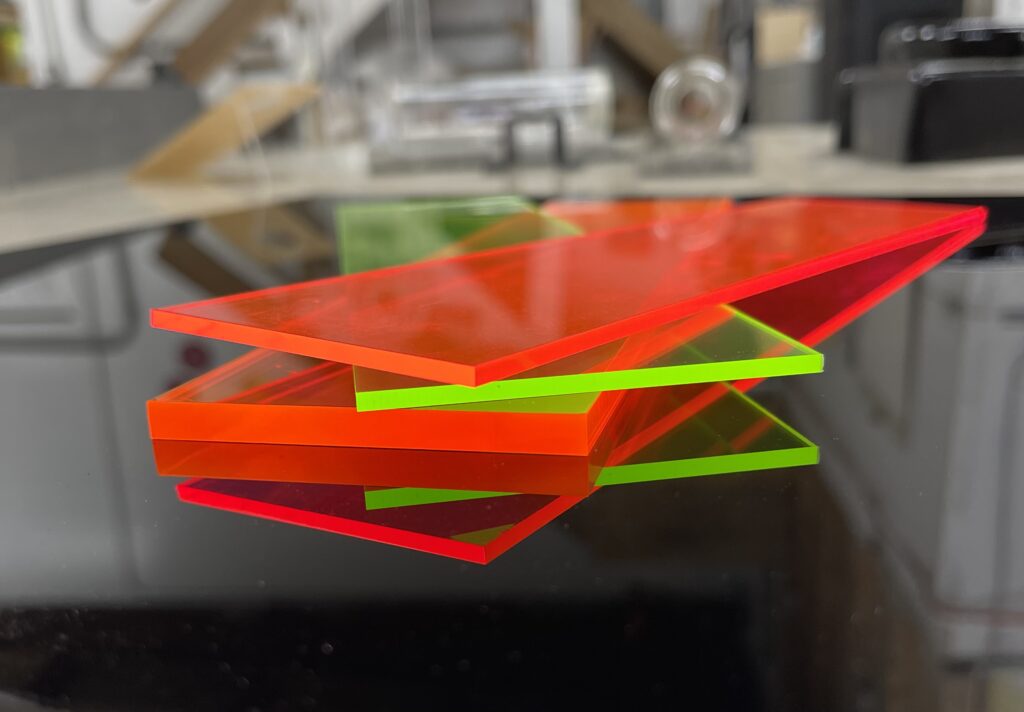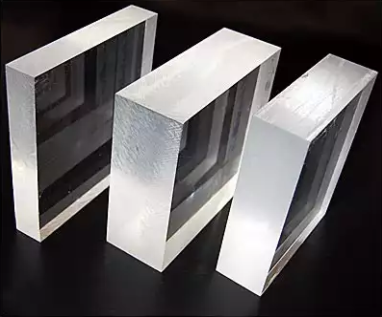Materials We Offer
- Acrylic/Plexiglass (PMMA)
- Properties: Clear, lightweight, durable, UV resistant, and higher impact resistance than glass
- Applications: Displays, signs, protective covers, lighting, barriers and windows, weddings, furniture and interior design (e.g., tables, chairs, and shelving units) sumps, and fish tanks.
- Machining Characteristics: Acrylic is relatively easy to machine and can be formed, bent, glued, cut, drilled, milled and routed, buffed and polished, and engraved.
- However, it can be prone to cracking or chipping if not handled properly.
- Polycarbonate (PC)
- Properties: High impact resistance, optical clarity, electrical insulation, chemical resistance, heat resistance, and flexibility with thinner sheets while maintaining strength.
- Regarding UV resistance, polycarbonate can degrade when exposed to UV light over time, it can be coated with a UV-resistant layer to improve its outdoor performance. Without UV protection, it may yellow or become brittle after prolonged exposure.
- Applications: Bulletproof and impact-resistant windows, safety shields and barriers, aircraft canopies and windshields, dashboards, light fixtures, construction, and architecture (e.g. roofing, skylights, glazing)
- Machining Characteristics: It can be glued/bonded, routed and milled, bent, vacuum-formed, and drilled.
- Polycarbonate is much stronger than acrylic and less prone to cracking. It does require careful cooling during machining to avoid heat build-up.
- Polycarbonate expands and contracts with temperature changes, so it’s important to account for this in designs that may experience wide temperature fluctuations.
- ABS (Acrylonitrile Butadiene Styrene)
- Properties: Tough, impact-resistant, good chemical resistance, lightweight, good dimensional stability, electrical insulation and heat-resistant.
- ABS can become more brittle at low temperatures, which may lead to cracking or breaking if it’s exposed to extreme cold.
- Applications: Automotive parts (e.g. dashboards, trim, instrument panels, bumpers, grilles), tanks, recreational vehicles and boats, appliances, and toys.
- Machining Characteristics: It can be cut, drilled, routed, milled, vacuum-form/thermoformed, laser cut, welded/joined, and bent.
- While ABS is not as moisture-sensitive as some plastics, it can absorb a small amount of moisture over time.
- Nylon (Polyamide)
- Properties: High tensile strength, low friction, and excellent wear resistance, self-lubricating, good chemical resistance, withstand moderate temperatures, flexibility, and electrical insulation.
- Nylon is hygroscopic, meaning it absorbs moisture from the air. This can affect is mechanical properties, particularly its strength and dimensional stability. Proper drying is essential before processing nylon for precise application
- Applications: Engine parts, gears, bearings, bushings, fuel lines and connectors, and conveyor belts
- Machining Characteristics: It can be cut, drilled, routed, milled, bent, and welded/joined.
- Nylon can be challenging to machine because it is prone to melting under high heat. However, with the right settings, it can produce durable and precise parts.
- Polyethylene (PE)
- Properties: Lightweight, low friction, chemical resistance, flexibility, impact resistance, moisture resistance, thermal insulation, UV resistance, recyclable,
- Applications: Medical devices, industrial and agricultural equipment, fuel tanks, marine boat components (boat hulls, docks, watercraft parts), electrical insulation, pipes and fittings (water and gas pipes, irrigation), packaging, construction and insulation (foam insulation, flooring, geomembranes),
- Machining Characteristics: It can be cut drilled, milled, routed, welding, ultrasonic welding, bending, extrusion, injection molding
- Polyethylene machines well and has a relatively low melting point, which means it’s critical to use proper cutting speeds and feeds.
- While PE can be painted, special adhesion primers are typically required to ensure a durable bond.
Some Common Varieties:
- Polyethylene exists in several forms, including:
- Linear Low-Density Polyethylene (LLDPE): A blend of LDPE and HDPE, offering higher tensile strength and flexibility, improved puncture resistance, good processability, more consistent; often used for stretch files, heavy duty plastic bags, linings and coatings, agricultural films, shipping materials
- Low-Density Polyethylene (LDPE): More flexible and softer, low melting point, good chemical resistance, transparent; commonly used for grocery and trash bags, food packaging, toys, and squeezable bottles.
- High-Density Polyethylene (HDPE): Stronger and more rigid, good impact resistance, opaque and more matte; often used for containers, pipes, and industrial applications, toys, outdoor furniture
- Polyethylene exists in several forms, including:
- Ultra High Molecular Weight (UHMW): Extremely high strength, excellent wear resistance, low friction, chemical resistance, good low-temperature performance, often used for medical devices (artificial joints), wear pads, conveyor parts, marine applications, aerospace and military applications, robotics and materials handling systems
- Polypropylene (PP)
- Properties: Lightweight, chemical-resistant, high melting point (160°-170°), fatigue resistant (structural integrity with repeated stress or bending) low coefficient of friction, good electrical insulation, moisture-resistant, impact resistant, recyclable
- PP can degrade when exposed to UV light for prolonged periods, leading to discoloration and loss of mechanical properties. UV stabilizers are often added to enhance its outdoor performance.
- Applications: interior automotive parts, storage compartments, battery casings, industrial applications ( piping systems, industrial storage containers, conveyor belts, gears, bearings), marine boat components, outdoor furniture (garden chairs and tables)
- Machining Characteristics:
- PVC (Polyvinyl Chloride)
- Properties: Highly durable that resists corrosion, weathering, and abrasion; low-cost, lightweight, electrical insulation, chemical-resistant, and flame-retardant, and moisture resistant
- While PVC is generally strong, it can become brittle in very cold conditions, which may cause it to crack or break under stress.
- Applications: Pipes, fittings, window frames, vinyl flooring, electrical, signage, automotive, agricultural
- Machining Characteristics: cut, drilled, milled, routed, welded, joined, bent
- PVC is easy to machine but produces significant dust during cutting, so effective dust extraction systems should be in place.
- Sintra – Expanded PVC (Polyvinyl Chloride)
- Properties: Extremely lightweight,
- Durable, impact-resistant, moisture resistant, weather-resistant, chemical resistant, smoother surface (easy to print, paint and laminate) UV-resistant, dimensional stability, inherent flame retardancy, easy to clean
- Applications: Indoor and outdoor signage, point-of-purchase displays, promo boards, wall panels and partitions, exhibits and trade shows, backlit signs, custom graphics, interior cladding, packaging protection, architectural molds, prototyping
- Machining Characteristics: It can be cut, drilled, milled, routed, welded, joined, painted, bent
- Before painting or applying adhesives, Sintra’s surface should be cleaned and prepped for the best adhesion. It may need to be lightly sanded or wiped with a mild solvent to ensure that paint, vinyl, or glue bonds properly.
